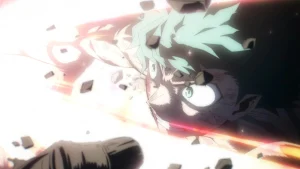When Halo 2 landed in 2004, it didn’t just redefine multiplayer shooters; it redefined how we think about post-launch content. I still remember sitting in my bedroom with a crackling headset waiting for the next map rotation so my friends and I could play together. Back then, downloadable content wasn’t a given. It was a bold experiment in keeping games alive after release. While modern games have made post-launch DLC the norm, it wasn’t so back then. And Halo 2, with its unforgettable mix of innovation and community, pulled it off in a way that feels almost revolutionary today.
But looking back now, nearly two decades later, it’s clear that Halo 2’s approach to downloadable content wasn’t just innovative. It was fair in a way that is lost today. It was designed to respect both players and developers, something modern games have increasingly lost sight of. Before the era of battle passes, early access, and cosmetic fatigue, Bungie and Microsoft quietly set a gold standard that we should seriously consider returning to.
In its first year, Halo 2 released multiple map packs that expanded the game’s already legendary multiplayer. The Bonus Pack led the way, being Bungie’s free DLC for the iconic game. But after this came paid DLC like the Killtacular Pack. It was released in April 2005 for a mere $5, containing new maps that reinvigorated online play. But what makes Halo 2’s DLC approach so special is what came next.
By August of that same year, just four months later, the Killtacular maps were available to all players, completely free with no strings attached. During that exclusivity window, the new maps lived in a dedicated playlist, meaning those who paid early got to experience the content first, while everyone else knew they weren’t being locked out forever. It wasn’t pay-to-win or pay-to-participate; it was pay-to-enjoy-early. After, the maps were made free and added to the regular rotation.
That system hit a perfect balance. It rewarded players who supported the game’s ongoing development while still honoring the broader community. It created a natural rhythm: excitement for new content, a sense of fairness for everyone, and a sustainable model for developers who needed to fund future updates. And crucially, it didn’t fracture the player base. Everyone would eventually end up on the same maps, fighting the same battles.
Fast forward to today, and the gaming landscape couldn’t feel more different. Modern live-service titles are built around battle passes, microtransactions, and endless cosmetic updates. On paper, these systems promise constant content. In practice, they’ve become exhausting. Players are asked to pay not for new gameplay experiences, but for the right to grind. Even worse, these are often paired with limited availability, causing players to fear missing out on exclusive content.
Look at some of the biggest multiplayer games today. Call of Duty, Fortnite, Battlefield, and even Halo Infinite. Each leans heavily on timed, seasonal models that encourage FOMO. It was either play the game during the event or open your wallet to participate. If you missed out, you had to hope that the content would return, of which there was never a guarantee. And if you skip a few months, you risk returning to a completely different game where your old purchases feel irrelevant.
This constant cycle creates pressure instead of excitement. Instead of anticipating the next event or season, you felt rushed to complete the current one. It also changed the attitude toward cool skins and unlocks. You’re not celebrating new content with friends; you’re comparing which skins or rewards each person unlocked. You also have to consider that most skins were purchased, not earned through skill and dedication, like in older games. It’s exhausting trying to keep up with the additional content in one game, but with so many options, players are pulled in multiple directions.
The brilliance of Halo 2’s approach was that it aligned everyone’s incentives. Developers got immediate support from players eager for new content, while everyone else knew they’d eventually benefit, too. That short exclusivity window turned paid DLC into something additional, not mandatory. It generated revenue without punishing the community while also allowing players to support the developer for a game they loved.
Imagine if modern games adopted that model again. Instead of locking new maps or modes behind permanent paywalls or endless passes, developers could offer timed, paid DLC that becomes free after a few months. It’s a simple shift, but it could solve several long-standing issues at once.
It would give fairness and accessibility, letting players enjoy content early while not excluding others permanently. It provides revenue for the developer without fans resenting them for paid content. This model gives sustainable pacing that doesn’t make players feel forced to purchase content immediately. And finally, it keeps the community together instead of separating them into playlists based on how much money they spent.
Think of how this could reinvigorate modern shooters or co-op games. Instead of the fatigue that comes from endless seasons, players could look forward to a steady cadence of meaningful updates. New maps, new missions, and even small story expansions. Those who want early access can pay a small premium, while those who want to wait can eventually enjoy the content. That’s the kind of cycle modern games desperately need again: one rooted in anticipation, fairness, and shared enthusiasm, not monetization fatigue.
What do you think? Leave a comment below and join the conversation now in the ComicBook Forum!
The post Halo 2 Had the Best Approach to Paid DLC (and We Should Go Back to It) appeared first on ComicBook.com.




